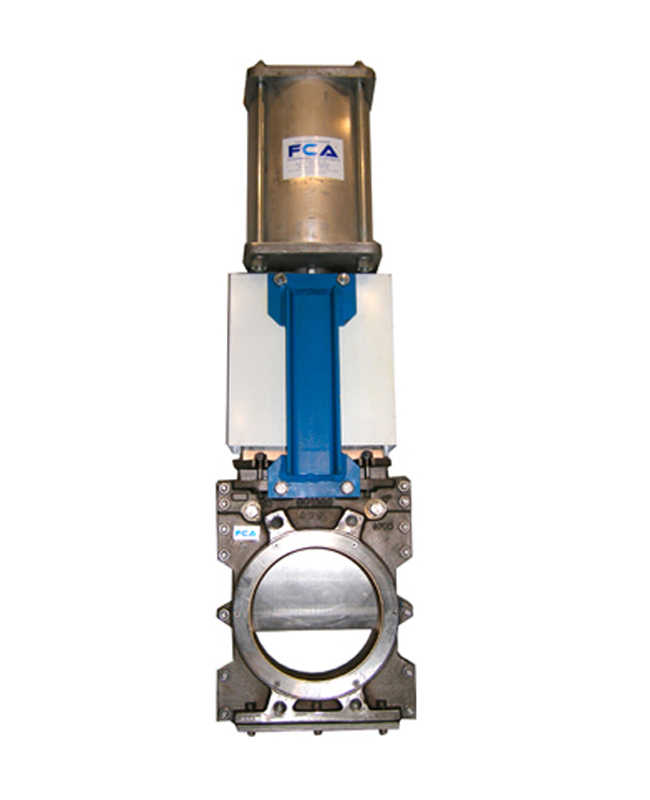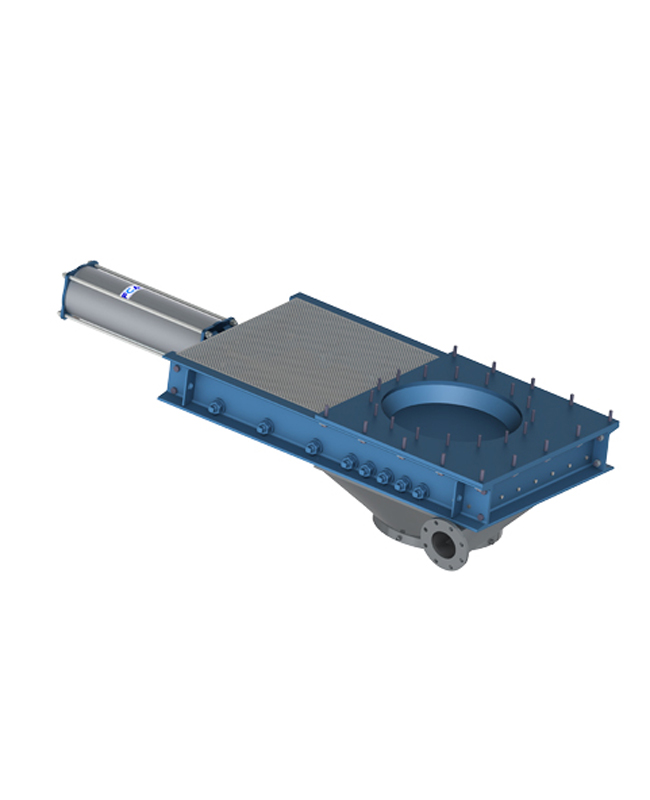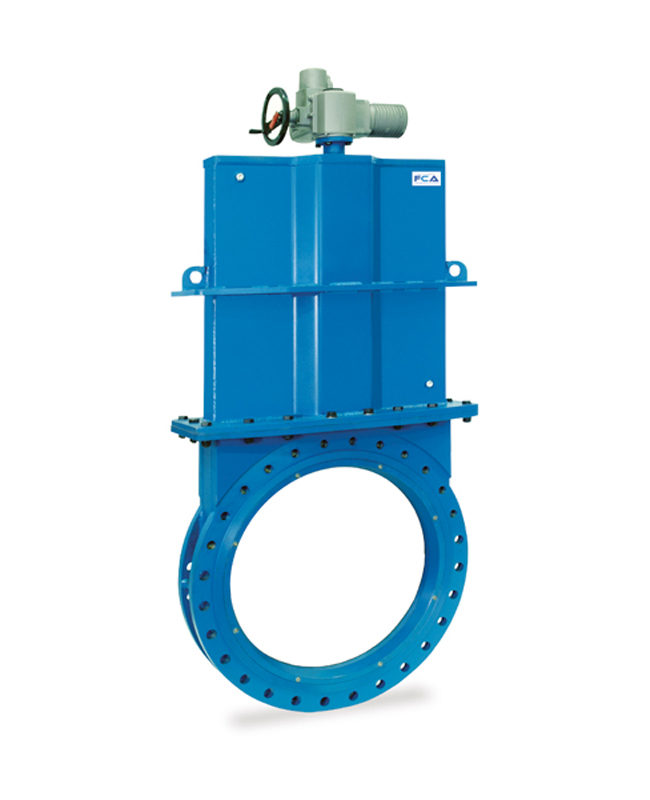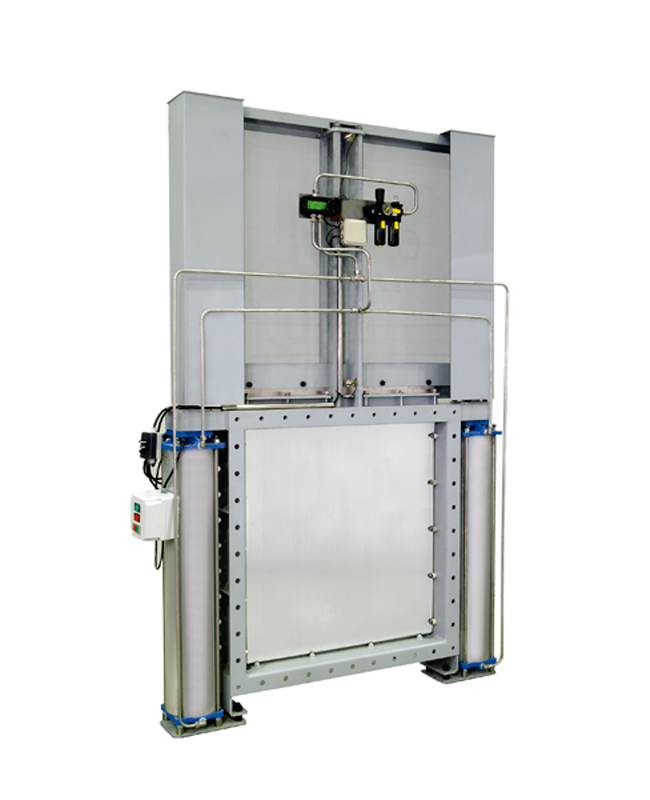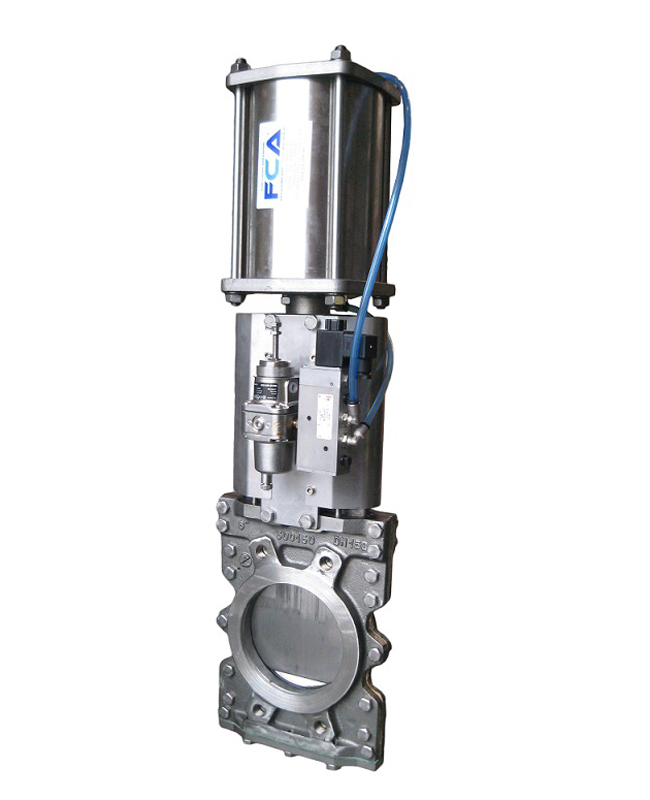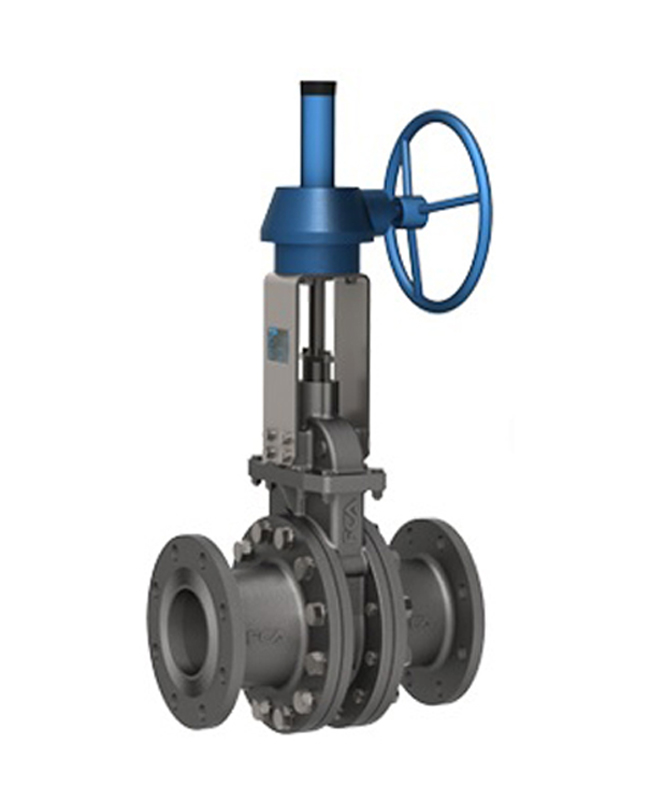The GMA model is the long pattern face to face FCA slurry knife gate valve design. Its double-seated design offers a bidirectional shut-off. These seats or rubber sleeves are provided with an internal metal core.
While the valve remains in an open position the two rubber sleeves made of wear-resistant material are in contact with each other providing a sleeve pattern, thus preventing any contact between the fluid and the body of the valve.
The GMA is a full flange type valve suitable to install between flanges or at the end of a line. It may be drilled acc. to ANSI 150 or DIN PN10. It is provided with a knife type gate in stainless steel which is polished on both sides with round-shaped edges for longer lasting of seats and packing elements.
| Design Standard | ANSI / DIN |
|---|---|
| Pressure | Up to 10bar. |
| Sizes | DN50/2'' to DN1200/48'' |
| Sectors | Mineral Processing Minerals Others Pulp and Paper Steel Industry |
| Materials | |
|---|---|
| Seat | Abrasion-resistant Natural Rubber (NR) Sleeves |
| Operation type | Bevel Gear, Electric Actuator, Handwheel, Hydraulic Actuator, Lever, Pneumatic Actuator |
| Applications | Abrasive media, Mining, Sludge, Slurry |
| Accessories & Options | Emergency System, Emergency closing devices, Filters, Flushing plate, Injection holes, Junction box, Limit Switches, Locking devices, Proximity switches, Solenoid valves, Stem extension |
Contact us and we will help you with any special application for this valve
Any question about this valve?
Please, fill the fields below to send us an information request


